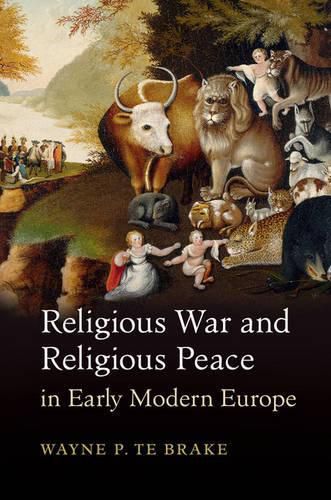Readings Newsletter
Become a Readings Member to make your shopping experience even easier.
Sign in or sign up for free!
You’re not far away from qualifying for FREE standard shipping within Australia
You’ve qualified for FREE standard shipping within Australia
The cart is loading…






Religious War and Religious Peace in Early Modern Europe presents a novel account of the origins of religious pluralism in Europe. Combining comparative historical analysis with contentious political analysis, it surveys six clusters of increasingly destructive religious wars between 1529 and 1651, analyzes the diverse settlements that brought these wars to an end, and describes the complex religious peace that emerged from two centuries of experimentation in accommodating religious differences. Rejecting the older authoritarian interpretations of the age of religious wars, the author uses traditional documentary sources as well as photographic evidence to show how a broad range Europeans - from authoritative elites to a colorful array of religious ‘dissenters’ - replaced the cultural ‘unity and purity’ of late-medieval Christendom with a variable and durable pattern of religious diversity, deeply embedded in political, legal, and cultural institutions.
$9.00 standard shipping within Australia
FREE standard shipping within Australia for orders over $100.00
Express & International shipping calculated at checkout
Religious War and Religious Peace in Early Modern Europe presents a novel account of the origins of religious pluralism in Europe. Combining comparative historical analysis with contentious political analysis, it surveys six clusters of increasingly destructive religious wars between 1529 and 1651, analyzes the diverse settlements that brought these wars to an end, and describes the complex religious peace that emerged from two centuries of experimentation in accommodating religious differences. Rejecting the older authoritarian interpretations of the age of religious wars, the author uses traditional documentary sources as well as photographic evidence to show how a broad range Europeans - from authoritative elites to a colorful array of religious ‘dissenters’ - replaced the cultural ‘unity and purity’ of late-medieval Christendom with a variable and durable pattern of religious diversity, deeply embedded in political, legal, and cultural institutions.